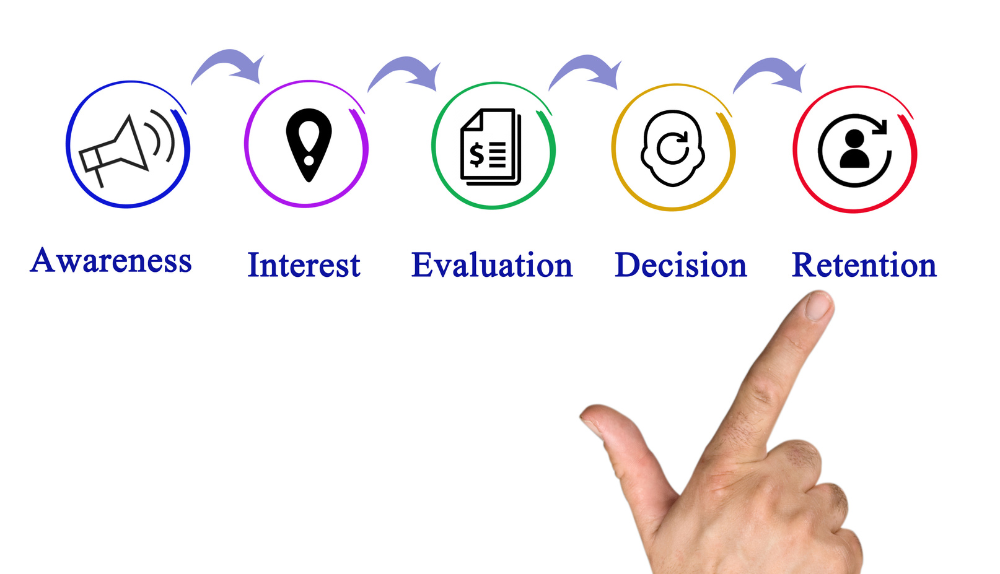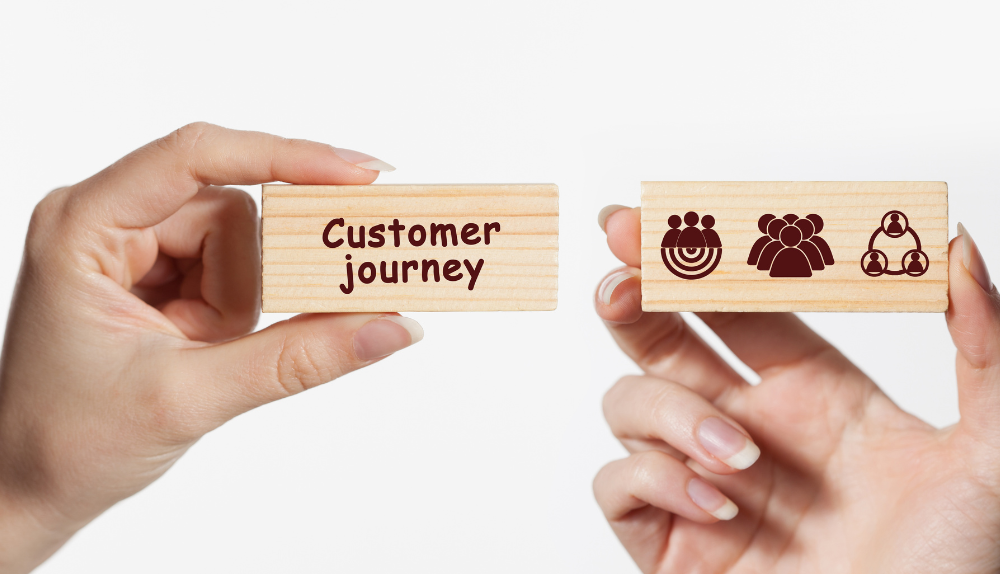In today’s hyper-connected world, businesses are constantly striving to provide exceptional customer experiences. They understand that a satisfied customer is not just a one-time buyer but a loyal advocate who can drive their success to new heights. But how do successful companies go beyond merely meeting customer expectations and truly excel in the realm of customer experience? The answer lies in understanding the customer journey. By delving deep into the intricate path customers take from initial awareness to final purchase and beyond, companies can gain invaluable insights.
And that’s where customer journey maps come into play, serving as the compass that guides businesses towards creating unforgettable experiences. In this article, we will explore the power of how customer journey maps create a better customer experience that leaves a lasting impression. Get ready to embark on a journey that will revolutionize your approach to customer satisfaction.
What is a Customer Journey Map?

A customer journey map is a powerful tool that visualizes the entire experience a customer has with a company or brand. It is a strategic representation of the customer’s interactions, emotions, and touchpoints throughout their entire journey, from initial awareness to post-purchase support. The map captures various stages, such as discovery, consideration, purchase, and advocacy, highlighting key moments and decision-making points. By mapping out the customer journey, businesses can gain a comprehensive understanding of their customers’ needs, pain points, and expectations at each stage.
This enables companies to identify opportunities for improvement, optimize touchpoints, and enhance the overall customer experience. Customer journey maps are typically created through a combination of research, data analysis, and customer feedback, allowing companies to empathize with their customers and align their strategies accordingly. They serve as a valuable framework for businesses to design customer-centric processes, personalize interactions, and deliver exceptional experiences that foster long-term loyalty and satisfaction.
How Customer Journey Maps Improve Customer Experience?

Customer journey maps provide businesses with valuable insights into their customers’ needs and expectations. By analyzing the various touchpoints and interactions along the customer journey, companies can identify pain points, frustrations, and areas of improvement. This understanding allows organizations to tailor their products, services, and processes to better meet customer expectations, ultimately enhancing the overall customer experience.
Identifying Opportunities for Improvement
A well-developed customer journey map highlights critical moments and decision-making points throughout the customer’s interaction with the company. By identifying these touchpoints, businesses can pinpoint areas where customer satisfaction may be compromised or opportunities for enhancement arise. This knowledge enables organizations to make targeted improvements, refine processes, and eliminate bottlenecks, resulting in a smoother and more satisfying customer experience.
Personalizing Interactions
Customer journey maps provide a holistic view of the customer’s experience, allowing companies to personalize interactions at each stage. With insights into customer preferences, behaviors, and pain points, businesses can tailor their messaging, offers, and interactions to match individual needs. By delivering personalized experiences, companies can create stronger emotional connections with their customers and foster a sense of loyalty and satisfaction.
Improving Cross-Channel Consistency
In today’s multi-channel landscape, customers interact with businesses through various touchpoints, such as websites, social media, mobile apps, and physical stores. Customer journey maps help organizations understand how these channels intersect and impact the customer experience. By ensuring consistency and coherence across channels, businesses can provide a seamless and integrated experience, regardless of where and how customers engage with the brand.
Enhancing Employee Engagement
Customer journey maps not only benefit customers but also empower employees. By visualizing the customer journey, businesses can educate and align their employees around the customer experience. Employees gain a deeper understanding of their roles and how they contribute to delivering exceptional experiences. This, in turn, boosts employee engagement, motivation, and a shared sense of purpose, resulting in improved customer interactions and satisfaction.
Continuously Iterating and Innovating
Customer journey maps are not static documents; they evolve as businesses gather new insights and feedback. By regularly revisiting and updating the maps, companies can stay agile and adapt to changing customer needs and market trends. This iterative process allows organizations to identify emerging opportunities, experiment with new ideas, and continuously innovate their customer experience strategies.
Overall, customer journey maps are a valuable tool for improving the customer experience. By understanding customer needs, identifying improvement opportunities, personalizing interactions, ensuring cross-channel consistency, engaging employees, and embracing continuous iteration, businesses can create exceptional experiences that foster customer loyalty and satisfaction.
How to Design a Customer Journey Map?

Designing a customer journey map involves several key steps to ensure its effectiveness in improving the customer experience. Here’s a simplified guide on how to design a customer journey map:
Define your customer personas
Start by identifying your target audience and creating customer personas. These personas represent different segments of your customer base and will help you understand their motivations, goals, and behaviors.
Map out the stages
Identify the key stages of the customer journey, such as awareness, consideration, purchase, and post-purchase. Customize the stages to align with your specific business and customer journey process.
Gather data and insights
Conduct research to gather relevant data and insights about your customers’ experiences. This can include customer surveys, interviews, social media listening, and analyzing customer feedback. Collect both qualitative and quantitative data to gain a comprehensive understanding.
Identify touchpoints
Identify all the touchpoints where customers interact with your brand throughout their journey. This can include website visits, social media engagement, customer service interactions, and more. Note down both online and offline touchpoints.
Determine customer emotions
Understand the emotions customers may experience at each stage and touchpoint. This helps you identify pain points, areas of delight, and opportunities for improvement. Consider how emotions may evolve from stage to stage.
Create the visual map
Design a visual representation of the customer journey map. This can be a flowchart, timeline, or any other format that effectively communicates the stages, touchpoints, and customer emotions. Use color coding, icons, and other visual elements to enhance clarity.
Validate and refine
Share the customer journey map with internal stakeholders and gather their feedback. Validate the map against real customer experiences to ensure its accuracy. Make necessary refinements based on the feedback received.
Implement changes and improvements
Use the insights from the customer journey map to drive changes and improvements across your organization. Address pain points, enhance touchpoints, and personalize interactions to align with the desired customer experience.
Continuously iterate
The customer journey is dynamic, so revisit and update your customer journey map regularly. Monitor customer feedback, track metrics, and incorporate new insights to keep the map relevant and effective over time.
By following these steps, you can design a customer journey map that provides a clear visual representation of the customer experience, allowing you to identify areas for improvement and create a more customer-centric approach to your business.
Why are Surveys Important for Designing Customer Journey Maps?
Surveys play a crucial role in developing a customer journey map as they provide valuable data and insights directly from the customers themselves. Here are several reasons why surveys are important in the process:
Gather customer feedback
Surveys allow you to collect feedback directly from your customers about their experiences at different stages of their journey. This feedback provides firsthand insights into their needs, preferences, pain points, and overall satisfaction. It helps you understand their perspective and identify areas where improvements are needed.
Identify key touchpoints
Surveys help identify the touchpoints that are most significant to your customers. By asking specific questions about their interactions with your brand, you can pinpoint the touchpoints that have the greatest impact on their experience. This information is valuable for prioritizing efforts and resources to enhance those touchpoints.
Assess customer satisfaction
Surveys provide a structured way to measure customer satisfaction at various stages of the journey. By including rating scales or open-ended questions about satisfaction, you can gauge how well your business is meeting customer expectations and identify areas where you can improve.
Uncover pain points and bottlenecks
Surveys allow you to uncover pain points and bottlenecks in the customer journey. By asking customers to describe their challenges or frustrations, you can pinpoint specific areas where customers may be encountering difficulties. This information helps you prioritize improvements and streamline the customer experience.
Validate assumptions
Surveys help validate assumptions and hypotheses about the customer journey. By including targeted questions related to specific hypotheses, you can gather data to confirm or challenge your assumptions. This ensures your customer journey map is based on real customer experiences rather than assumptions or guesswork.
Track changes over time
By conducting surveys periodically, you can track changes in customer perceptions and experiences over time. This allows you to monitor the impact of improvements made based on the customer journey map and identify new focus areas for further enhancements.
Support data-driven decision-making
Surveys provide quantitative data that can be analyzed and compared across different customer segments and touchpoints. This data-driven approach helps in making informed decisions about where to allocate resources, prioritize initiatives, and make improvements that will have the most significant impact on the customer experience.
Overall, surveys are a valuable tool for gathering customer insights and feedback, helping you understand their needs, measure satisfaction, identify pain points, and validate assumptions. By incorporating survey data into your customer journey mapping process, you can create a more accurate and customer-centric representation of the customer experience.
Final Words
In conclusion, customer journey maps are an invaluable tool for businesses seeking to create a better customer experience. By understanding the customer’s needs, identifying improvement opportunities, personalizing interactions, ensuring cross-channel consistency, engaging employees, and embracing continuous iteration, companies can elevate their customer experience to new heights. Surveys play a crucial role in this process, providing direct feedback from customers and validating assumptions to develop accurate and customer-centric journey maps.
By leveraging the insights gained from surveys and incorporating them into the design process, businesses can make data-driven decisions, prioritize improvements, and foster meaningful connections with their customers. With a well-crafted customer journey map as their compass, organizations can navigate the complex landscape of customer expectations, delivering exceptional experiences that leave a lasting impression and cultivate strong customer loyalty.
Ultimately, by placing the customer at the center of their strategies and utilizing customer journey maps as their guide, businesses can thrive in today’s competitive marketplace.
Frequently Asked Questions (FAQs)
What is the difference between a customer journey map and a customer experience map?
While the terms are sometimes used interchangeably, a customer journey map typically focuses on a specific customer’s path, while a customer experience map provides a broader view of the overall customer experience across multiple customers or segments.
How long does it take to create a customer journey map?
The time required to create a customer journey map varies depending on factors such as the complexity of the customer journey, the availability of data and insights, and the resources allocated to the project. It can range from a few weeks to several months.
What data sources can be used to inform the customer journey map?
Customer journey maps can be informed by various data sources, including customer surveys, interviews, customer feedback, website analytics, social media listening, customer service interactions, and sales data. The choice of data sources depends on the specific needs and resources of the organization.
How often should a customer journey map be updated?
Customer journey maps should be regularly reviewed and updated to reflect changes in customer behavior, market trends, and business strategies. It is recommended to revisit and update the map at least once a year, but more frequent updates may be necessary in fast-paced industries or when significant changes occur.
Can customer journey maps be applied to B2B (business-to-business) customer experiences?
Yes, customer journey maps are applicable to both B2C (business-to-consumer) and B2B customer experiences. In B2B contexts, the customer journey may involve multiple decision-makers, longer sales cycles, and more complex touchpoints. Adaptations can be made to tailor the customer journey map to the specific dynamics of B2B relationships.
Can customer journey maps be used for digital experiences only?
No, customer journey maps can encompass both online and offline touchpoints. While digital experiences play a significant role in today’s business landscape, customer journey maps can incorporate interactions in physical stores, customer service calls, events, and other offline channels.
Start Your Free Trial Today!
Find out how easy it is to improve your customer support and save time for FREE!